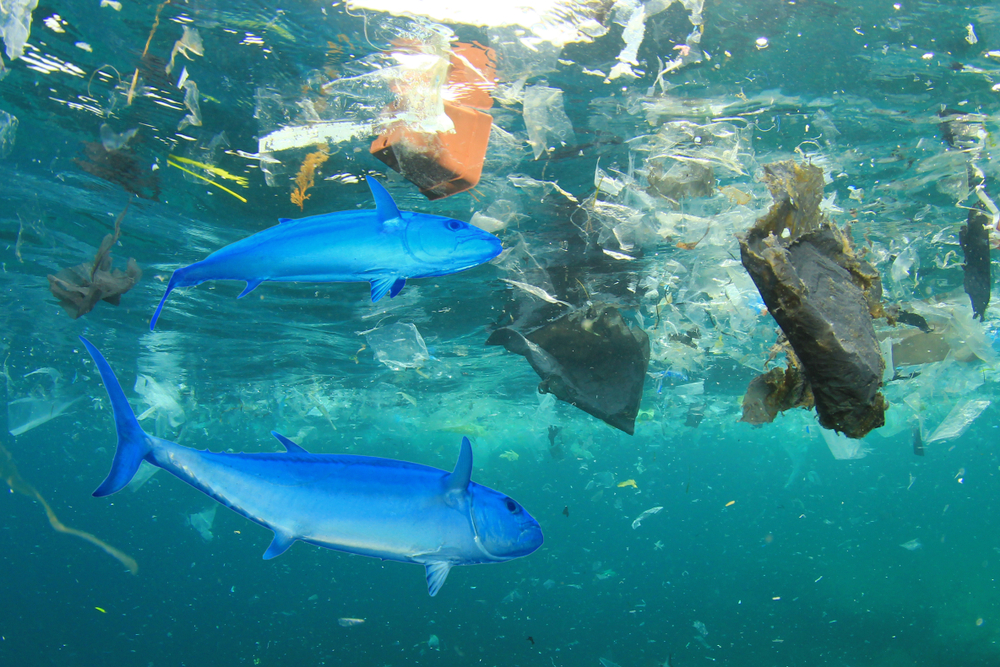How do we solve a problem like plastic pollution?
By Christopher Thompson
René Garello, IEEE fellow and Professor at IMT Atlantique, discusses how data analytics is being used to track the circulation of plastic in the ocean and help scientists to ensure sustainability
Last month, while embarking on a bid to break the deepest dive record, American explorer Victor Vescovo explored the Mariana Trench in the Pacific Ocean at a depth of almost seven miles. Along the way, Vescovo found a variety of sea creatures and wildlife that won’t be found anywhere else in the world – as well as a plastic bag and sweet wrappers.
Sadly, yet perhaps unsurprisingly, this is indicative of a much wider issue – and until recently, many people were unaware of the worrying scale of this problem. The Great Pacific Garbage Patch (GPGP)is the largest of five offshore plastic accumulation zones in the world’s oceans, located between California and Hawaii, and providing a stark manifestation of global plastic pollution and the urgent challenges that we face. It was recently estimated that there are 1.8 trillion pieces, or 80,000 metric tons, of plastic floating around the patch, which measures approximately 1.6 million square kilometres1.
In recognition of the urgency of this issue, the United Nations recently announced that 186 countries have reached an agreement to monitor and track movements of plastic waste outside their borders. This is to create a better-regulated global trade in plastic, and each country will have to work out the most appropriate way to adhere to the agreement. This could become a significant obstacle, because aside from actually cleaning up the plastic, one of the biggest problems is effectively tracking and locating plastic in our oceans.
There are many challenges associated with even collecting data on plastic pollution in both coastal and marine environments. This is partly because of the size of the individual pieces of plastic – many are less than a metre long and this means it is extremely difficult to create clear images from platforms in space.
Furthermore, inevitable fragmentation and decomposition mean that these pieces of plastic gradually reduce in size, making them virtually impossible to detect. This degradation does not mean that the plastic pollution will disappear entirely, it will simply become ‘micro plastics’ (less than 5mm long) over time, which can cause further issues as this enters the human body through food and water.
The good news is that as technology advances, we are seeing the emergence of new and collaborative methods of addressing this challenge. The process of properly quantifying the mass of disintegrating plastics in the ocean requires taking spatially distributed measurements of all sizes and classes of debris on a global scale, as well as the plastic beneath the surface. Clearly, this is not a problem that any single technology or nation can solve.
Instead, scientists must focus on the acquisition of data from multiple sources – such as satellite imaging mixed with global and local observations – to create models of surface current circulation and give indicators of the levels of plastic presence.
A secondary challenge is that of our means of data collection and analysis. In order to get meaningful output from such a diverse data set, and to improve their decision-making ability, scientists must ensure that they are fully and thoroughly analysing the data. Given the sheer volume of data, there is a definite need to implement artificial intelligence (AI) in some capacity – via a machine learning or deep learning based approach – to make sense of what is collected.
AI can be used throughout the process of data collection and analysis. First, partners must create and maintain a repository where they can access and store their data easily, one which will be able to cope with demands of such huge amounts of data. Additionally, these emerging technologies will help with the development of general tools for learning the prescribed plastic detection and tracking processes.
An example is the use of drones, which are being mounted with cameras and flown locally across coastal regions of oceans. To improve detection rates and reduce false positives, AI is being trained to recognise the difference between shells, jellyfish and plastic products.
Finally, to be effective, AI must be able to perform automatic browsing and processing to deliver the expected monitoring and tracking services. If the technology is not able to continually update its results based on incoming data, then we would not have a real-time view of the issue.
As the world continues to come together in a bid to expose and address this growing problem, we must continually look at the ways in which technology is enabling the ongoing monitoring, tracking and clean-up of the plastic that has already blighted such a large segment of the world’s oceans.

